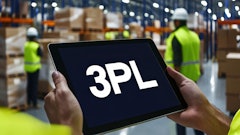
The modern supply chain is in a state of flux. With rising transportation costs, evolving consumer expectations, and the ever-increasing demand for faster deliveries, businesses are under mounting pressure to ensure efficiency and reliability in their logistics operations.
A recent industry survey underscores the severity of the situation, as nearly 70% of companies frequently adjust delivery routes in real time due to unexpected delays. Additionally, 39% report making these adjustments multiple times per day.
These statistics reveal a critical flaw in last-mile delivery systems—one that could have major cost and operational repercussions if not addressed.
The cost of inefficiency and the last-mile bottleneck
Last-mile delivery, the final step in the supply chain before a package reaches the end user, has long been one of the most expensive and complex aspects of logistics. Vehicle capacity constraints, strict delivery time windows, and traffic congestion are the primary factors contributing to inefficiencies in last-mile routing.
As businesses strive to optimize fleet utilization, many encounter challenges in balancing load capacity with delivery schedules, leading to unnecessary rerouting and excess mileage. With same-day and next-day delivery now the standard, companies must navigate precise delivery windows, which often complicate routing strategies. Urban centers are especially prone to unpredictable traffic conditions that force companies or distribution partners to reroute deliveries in real time, adding operational strain.
The consequences of inefficient routing extend beyond just delivery delays with U.S. business logistics costs surpassing $2.3 trillion in 2023—a 19.6% increase from the previous year. A considerable portion of these costs stems from last-mile inefficiencies, further exacerbated by labor shortages, fluctuating fuel prices, and congestion in urban centers.
Additionally, 40% of supply chain executives noted that between 6-20% of their deliveries arrive outside the promised time window due to poor route planning. Late deliveries don’t just impact cost—they also erode customer trust and brand reputation. In today’s user-driven economy, where next-day or even same-day shipping has become the standard, delays can translate into lost business and diminished loyalty.
Moreover, inefficient routing leads to excess mileage, directly inflating operational expenses. With fuel prices in constant flux, every additional mile driven increases costs, making streamlined routing an urgent priority.
Another important challenge is sustainability. Inefficient routing and excessive mileage contribute significantly to carbon emissions, further increasing the environmental impact of supply chain operations. As companies aim to align with sustainability goals, optimizing delivery routes becomes essential to reducing fuel consumption, minimizing emissions, and ensuring a lower carbon footprint. Governments and regulatory bodies are also pushing for greener logistics solutions, and businesses failing to adapt may face increasing scrutiny and regulatory costs.
The role of AI, real-time optimization, and a path forward for supply chains
Despite these mounting challenges, technological advancements present opportunities for companies to modernize their approach to routing. Real-time route optimization powered by AI offers several benefits.
AI-powered systems can instantly analyze traffic conditions, delivery constraints, and vehicle capacity, making intelligent routing adjustments in real time. Predictive analytics leverage historical data to identify potential disruptions before they occur, allowing businesses to proactively adjust delivery schedules. AI-driven route planning helps minimize fuel consumption, reduce driver workload, and improve on-time delivery rates. However, many solutions still struggle to fully account for the complexities of last-mile delivery in real-world applications, requiring solutions that can be purpose-built for unique routing challenges.
While AI offers promising improvements, its effectiveness depends on proper implementation and oversight of a team of seasoned experts. Many organizations hesitate to invest in these technologies due to cost concerns, lack of expertise, or resistance to change. Overcoming these barriers requires a strategic approach, in which companies must conduct thorough evaluations of their routing inefficiencies, integrate AI solutions in stages, and train their workforce to adapt to new technologies. AI adoption should not be seen as a one-time solution but as an ongoing process requiring constant updates and refinements to ensure continued efficiency gains.
Another critical component of supply chain efficiency is data integration. Many logistics companies operate with fragmented systems, where data from GPS tracking, warehouse management, traffic analytics, and order processing exist in silos. To maximize the benefits of AI-driven routing, businesses must ensure seamless communication between these systems. A well-integrated data ecosystem allows for real-time decision-making, predictive analytics, and enhanced visibility across the supply chain. Companies that fail to prioritize data integration risk missing out on the full advantages of advanced optimization technologies.
The ability to quickly adapt to disruptions—whether from traffic, weather, or delivery constraints—will be key to maintaining efficiency. Businesses should adopt dynamic routing models that allow for agile response mechanisms. In addition, fostering collaboration across supply chain stakeholders, including carriers, retailers, and technology providers, will further enhance adaptability and resilience. Shared data platforms and real-time communication channels can improve coordination, reducing delivery failures and optimizing operational efficiency.
Reducing excess mileage not only cuts costs but also lowers carbon emissions. As sustainability becomes an industry priority, companies should focus on routing strategies that minimize environmental impact. Electric and alternative-fuel vehicles are also becoming viable options for last-mile delivery, and businesses that invest in green transportation solutions will likely gain a competitive edge. Consumers are increasingly making purchasing decisions based on sustainability, and companies with a strong environmental commitment can enhance brand loyalty while reducing operational costs.
Overcoming the last-mile logistics crisis necessitates a comprehensive strategy that incorporates technological innovation, seamless data integration, and sustainability. The adoption of AI-powered real-time optimization offers the modernizing potential for managing delivery challenges, enabling companies to efficiently navigate disruptions, optimize fuel consumption, and bolster customer satisfaction with timely, reliable deliveries. While implementation hurdles exist, businesses that successfully integrate these technologies and commit to sustainable practices can gain a competitive edge as eco-consciousness shapes consumer choice. By fostering collaboration among supply chain stakeholders and investing in green technologies, companies can mitigate costs, enhance operational efficiency, and build enduring customer trust. Considering that nearly 70% of businesses frequently adjust routes due to delays, effectively addressing last-mile challenges is crucial not only to manage rising costs and evolving consumer expectations but also to safeguard brand reputation. Thus, understanding and tackling these issues is essential for businesses aiming to thrive in an increasingly competitive market, with innovative solutions offering pathways to redefine last-mile delivery strategies and drive growth.





![Pros To Know 2025 [color]](https://img.sdcexec.com/files/base/acbm/scn/image/2025/01/Pros_To_Know_2025__color_.67856cb23da64.png?auto=format%2Ccompress&fit=crop&h=167&q=70&w=250)














